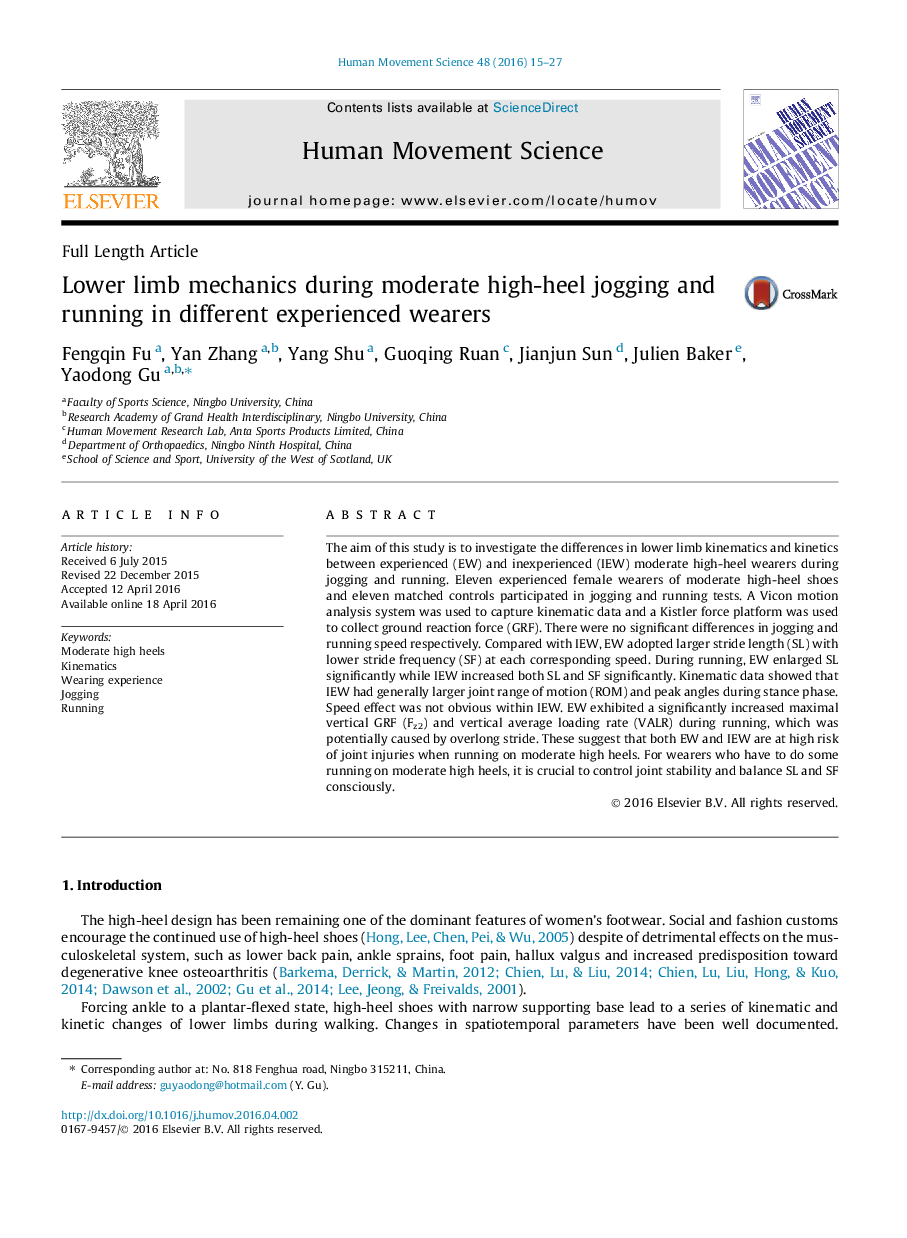| کد مقاله | کد نشریه | سال انتشار | مقاله انگلیسی | نسخه تمام متن |
|---|---|---|---|---|
| 928181 | 1474217 | 2016 | 13 صفحه PDF | دانلود رایگان |
The aim of this study is to investigate the differences in lower limb kinematics and kinetics between experienced (EW) and inexperienced (IEW) moderate high-heel wearers during jogging and running. Eleven experienced female wearers of moderate high-heel shoes and eleven matched controls participated in jogging and running tests. A Vicon motion analysis system was used to capture kinematic data and a Kistler force platform was used to collect ground reaction force (GRF). There were no significant differences in jogging and running speed respectively. Compared with IEW, EW adopted larger stride length (SL) with lower stride frequency (SF) at each corresponding speed. During running, EW enlarged SL significantly while IEW increased both SL and SF significantly. Kinematic data showed that IEW had generally larger joint range of motion (ROM) and peak angles during stance phase. Speed effect was not obvious within IEW. EW exhibited a significantly increased maximal vertical GRF (Fz2) and vertical average loading rate (VALR) during running, which was potentially caused by overlong stride. These suggest that both EW and IEW are at high risk of joint injuries when running on moderate high heels. For wearers who have to do some running on moderate high heels, it is crucial to control joint stability and balance SL and SF consciously.
Journal: Human Movement Science - Volume 48, August 2016, Pages 15–27
